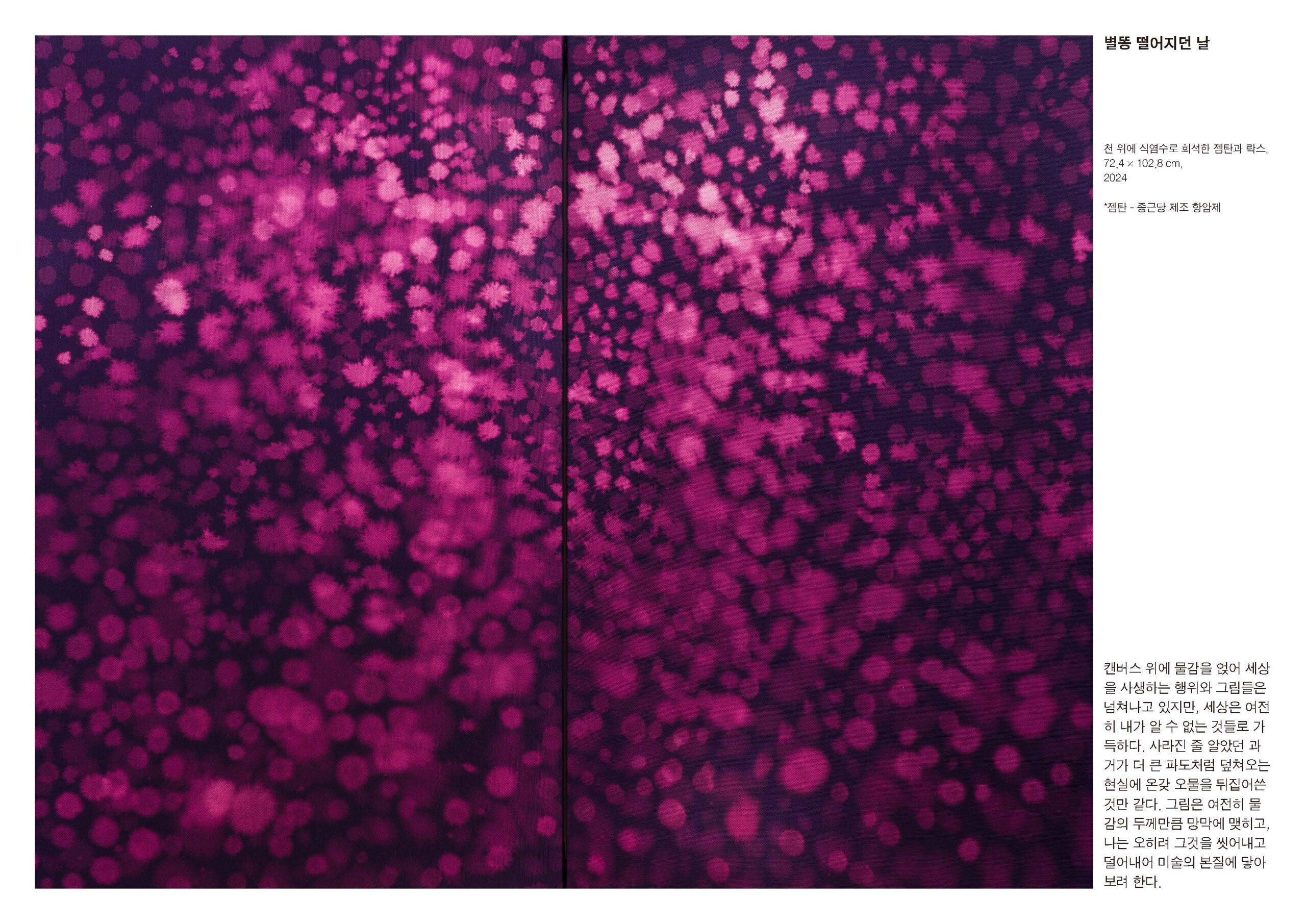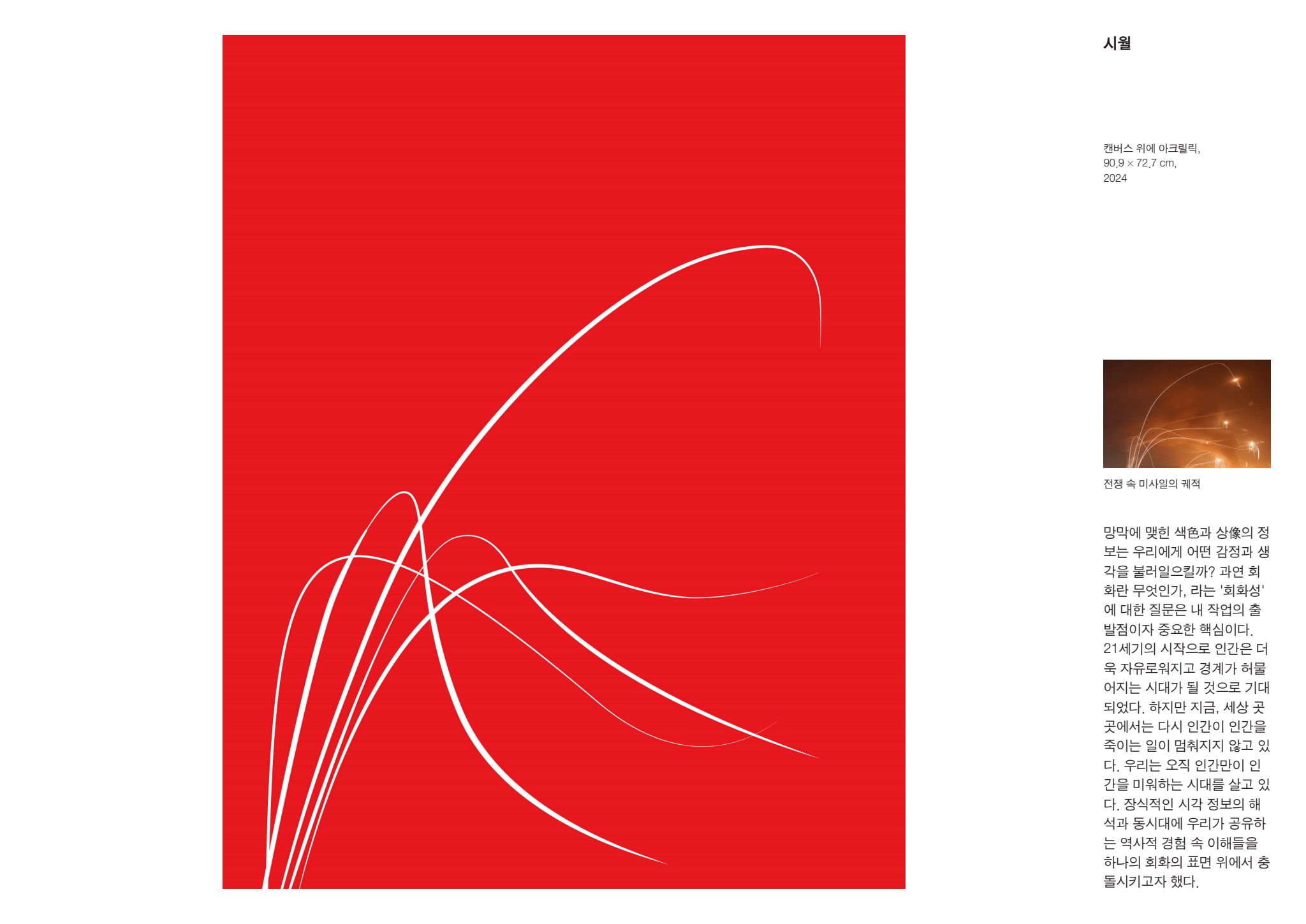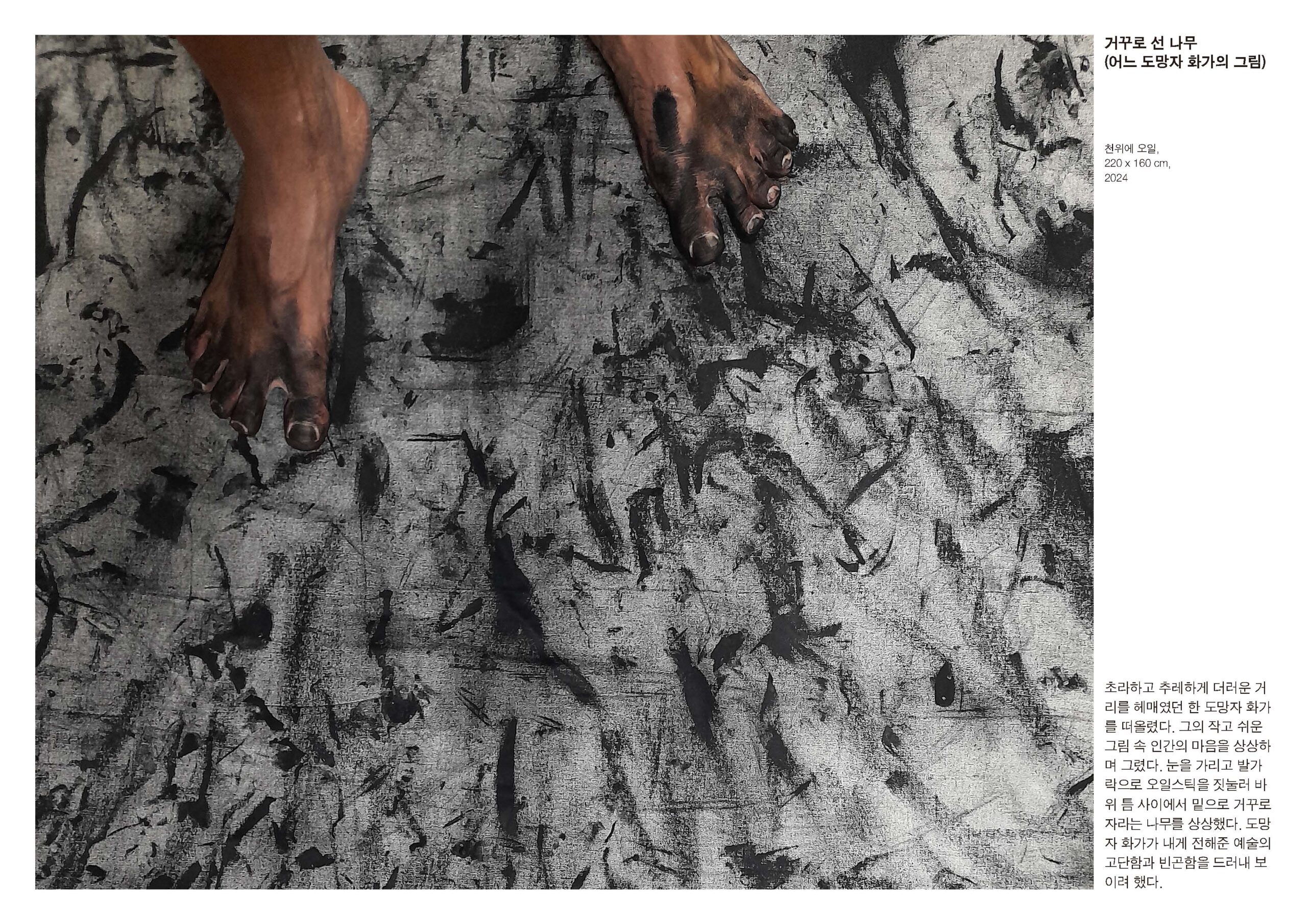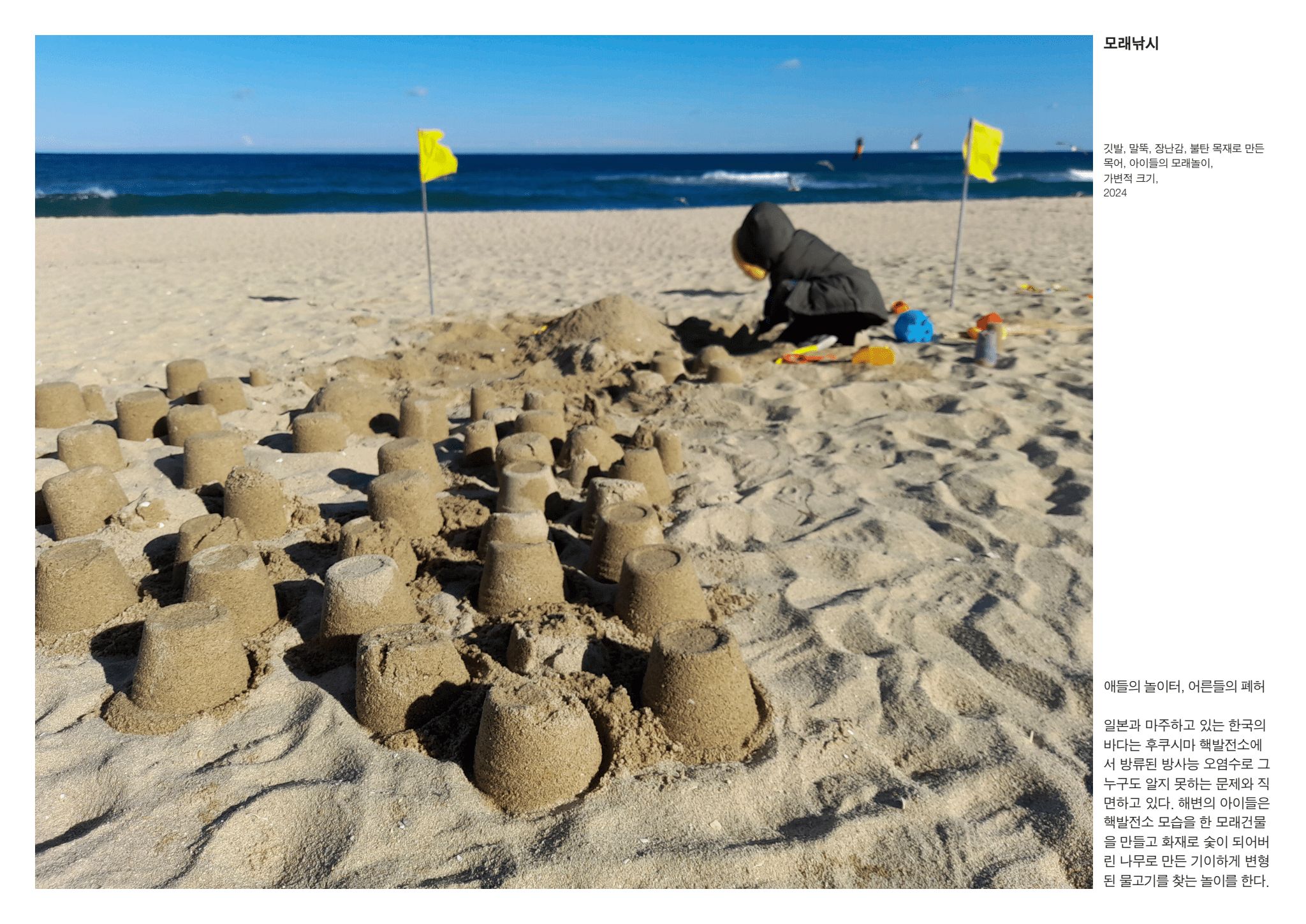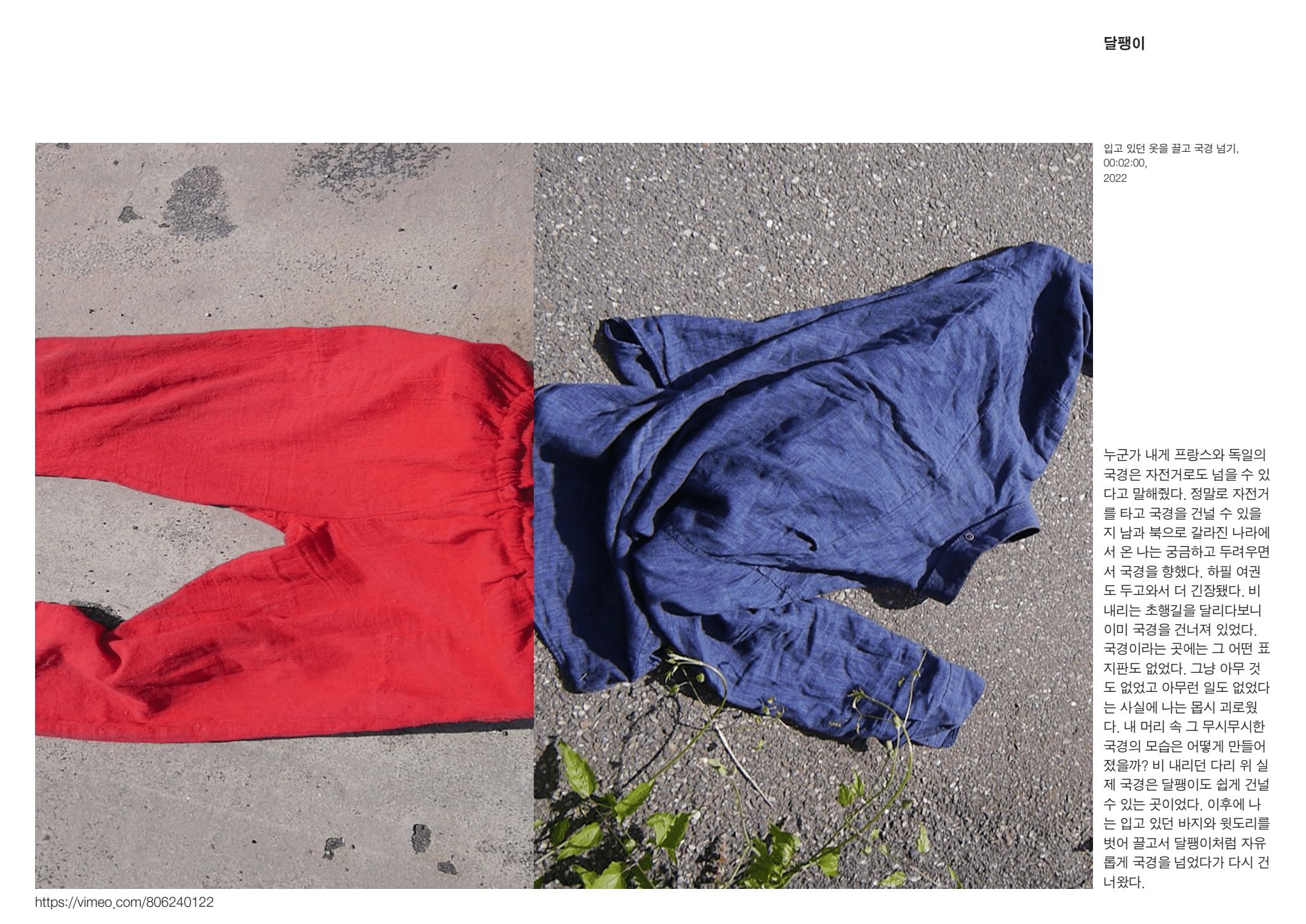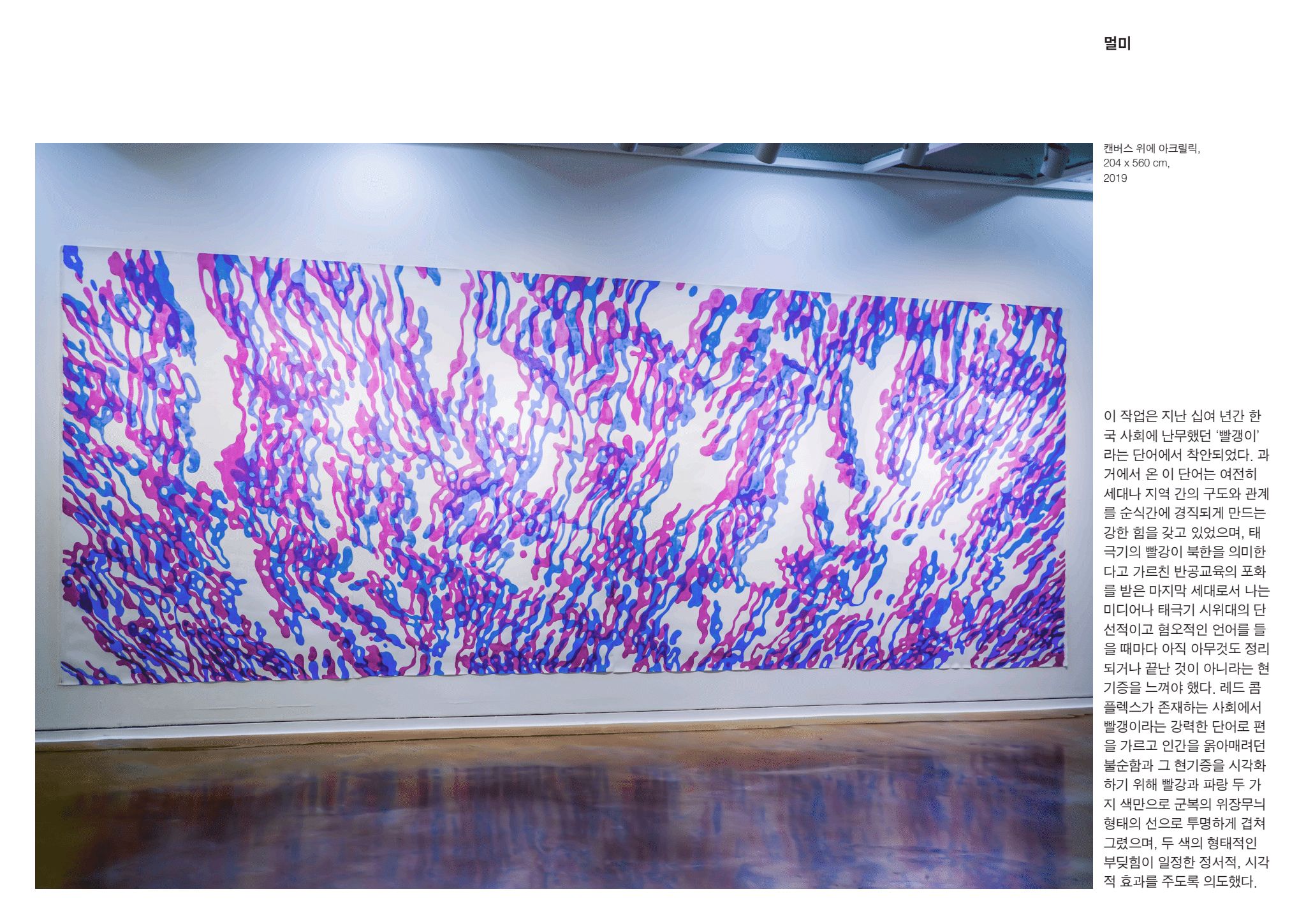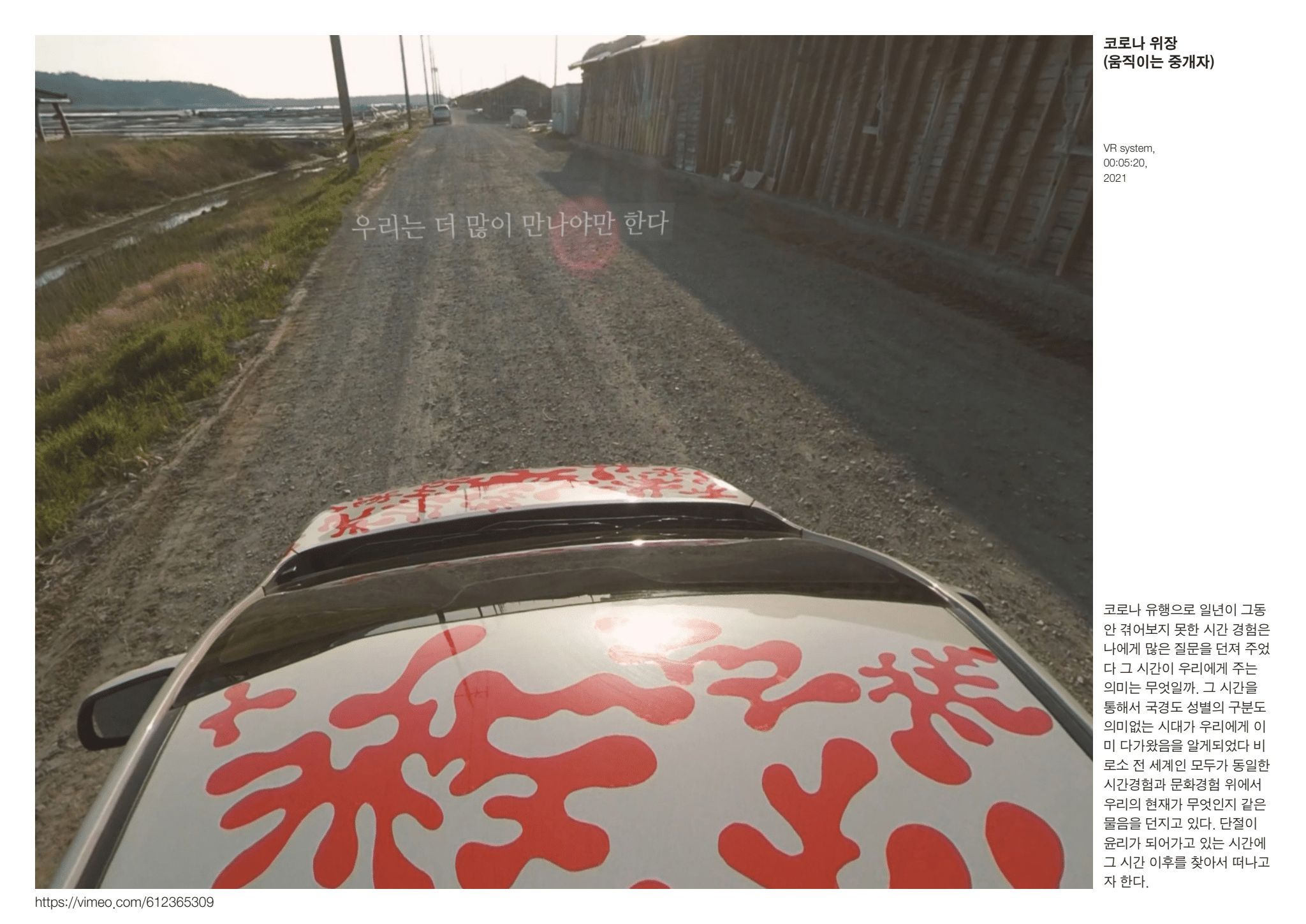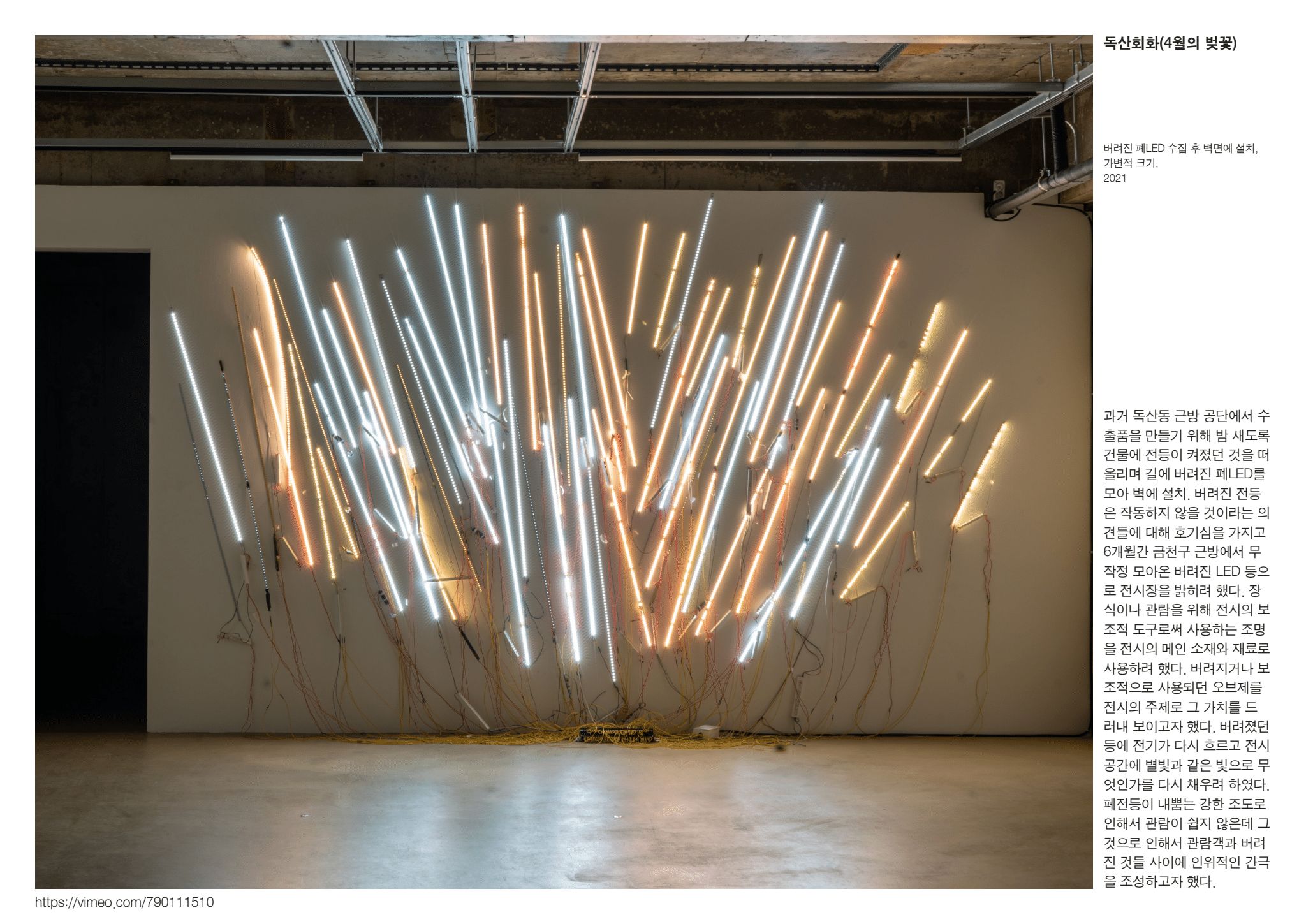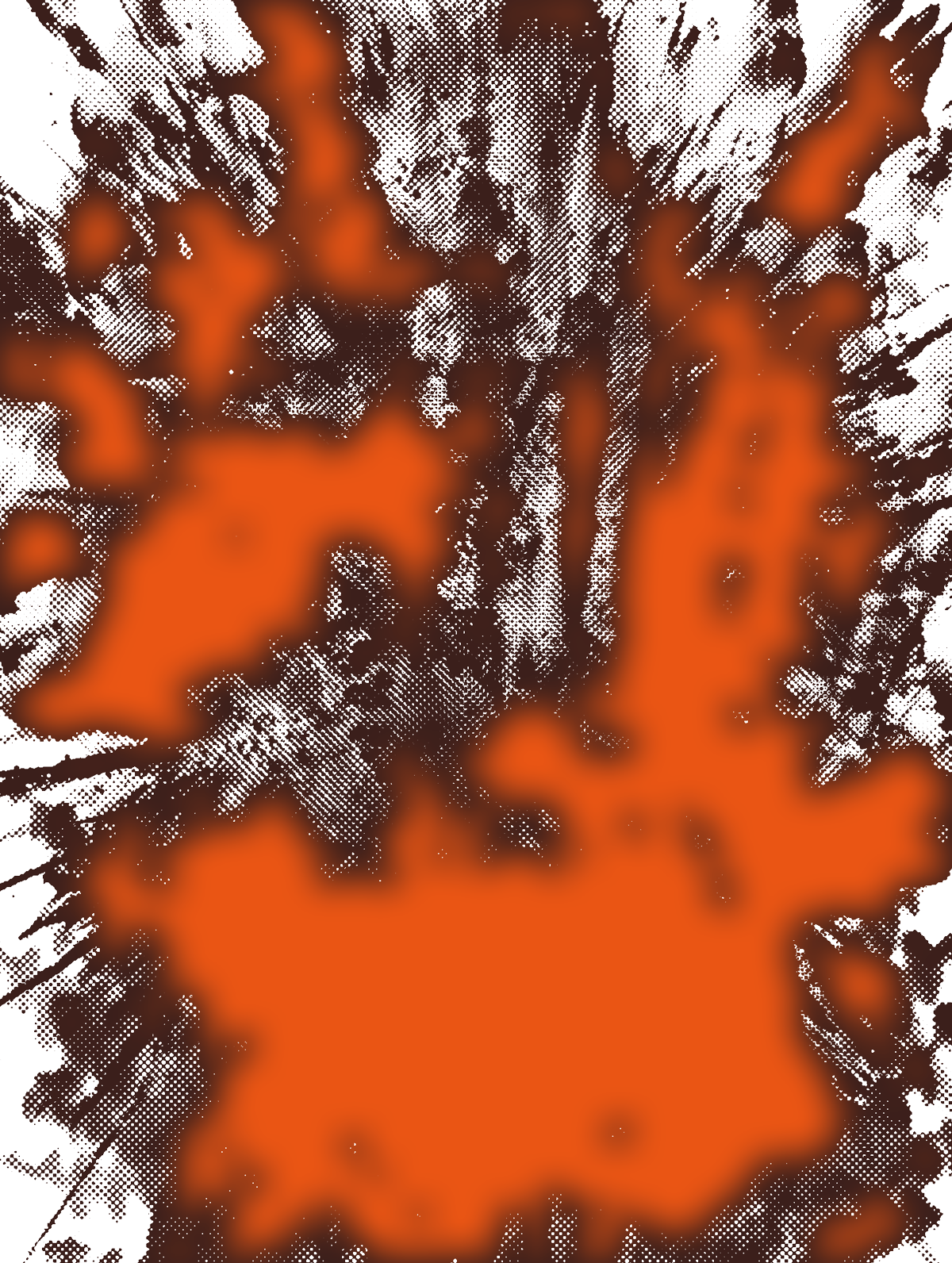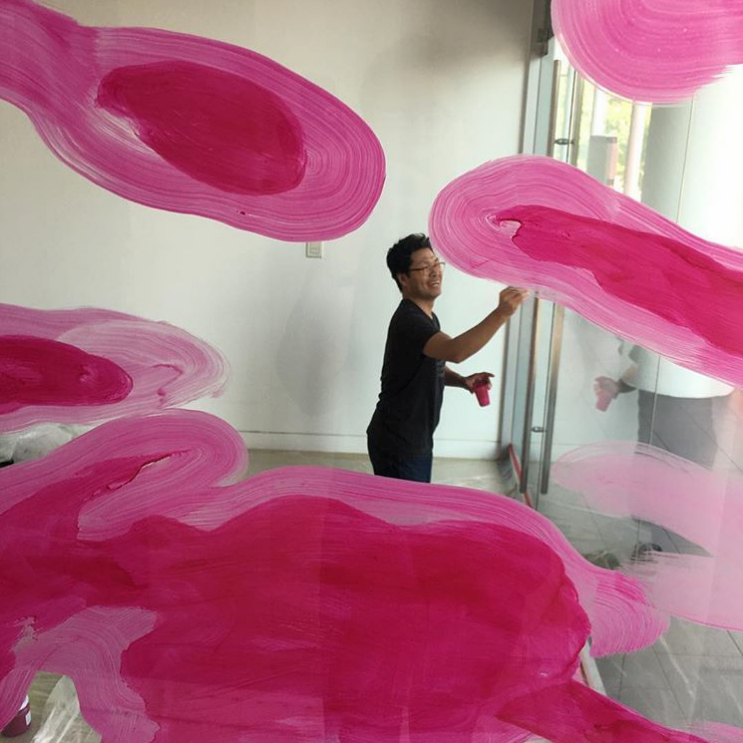
최선 Sun Choi
손 없이, 눈 없이
한국현대미술의 흐름과 역사에 대해 공부를 하면서 예술 창작의 주체와 그 가치 판단에 관한 기준에 대해 질문하게 됐다. 그러한 고민을 바탕으로 캔버스 위에 긁어내고 뜯어낸 흔적만 남긴 <벌거벗은 그림(MIA 미술관, 서울, 2004)> 으로 작가 활동을 시작했다. 이후 ‘손 없이, 눈 없이도 미술은 가능한가’라는 화두를 중심으로, 인간과 사회의 의식을 탐구하는 회화와 설치 작품을 제작해왔다.
2014년 세월호 참사 이후에는 사회적 반목을 부추기고 생명을 경시하는 풍조를 비판하면서 시작한 ‘나비’ 프로젝트를 현재까지 진행하고 있다. <메아리(송은아트스페이스, 서울, 2015)>, <멀미(CR Collective, 서울, 2017)> 등 개인전과
Without Hands, Without Eyes While studying the flow and history of modern Korean art, I began to question the subject of art creation and the criteria for judging its value. Based on this reflection, I started my career as an artist with "The Naked Painting" (MIA Museum, Seoul, 2004), which left only traces of scratching and tearing on the canvas. Since then, centered on the theme "Is art possible without hands, without eyes?", I have been creating paintings and installation works that explore human and social consciousness. Since the Sewol ferry disaster in 2014, I have been working on the "Butterflies Project" to criticize the social division and the trend of disregarding life. I have participated in solo exhibitions such as "Meari (Echo)" (SongEun Art Space, Seoul, 2015) and "Sickness" (CR Collective, Seoul, 2017), as well as group exhibitions like "Border Crossings" (Kunstmuseum Bern, Bern, 2021) and the 3rd Jeju Biennale (2022).
